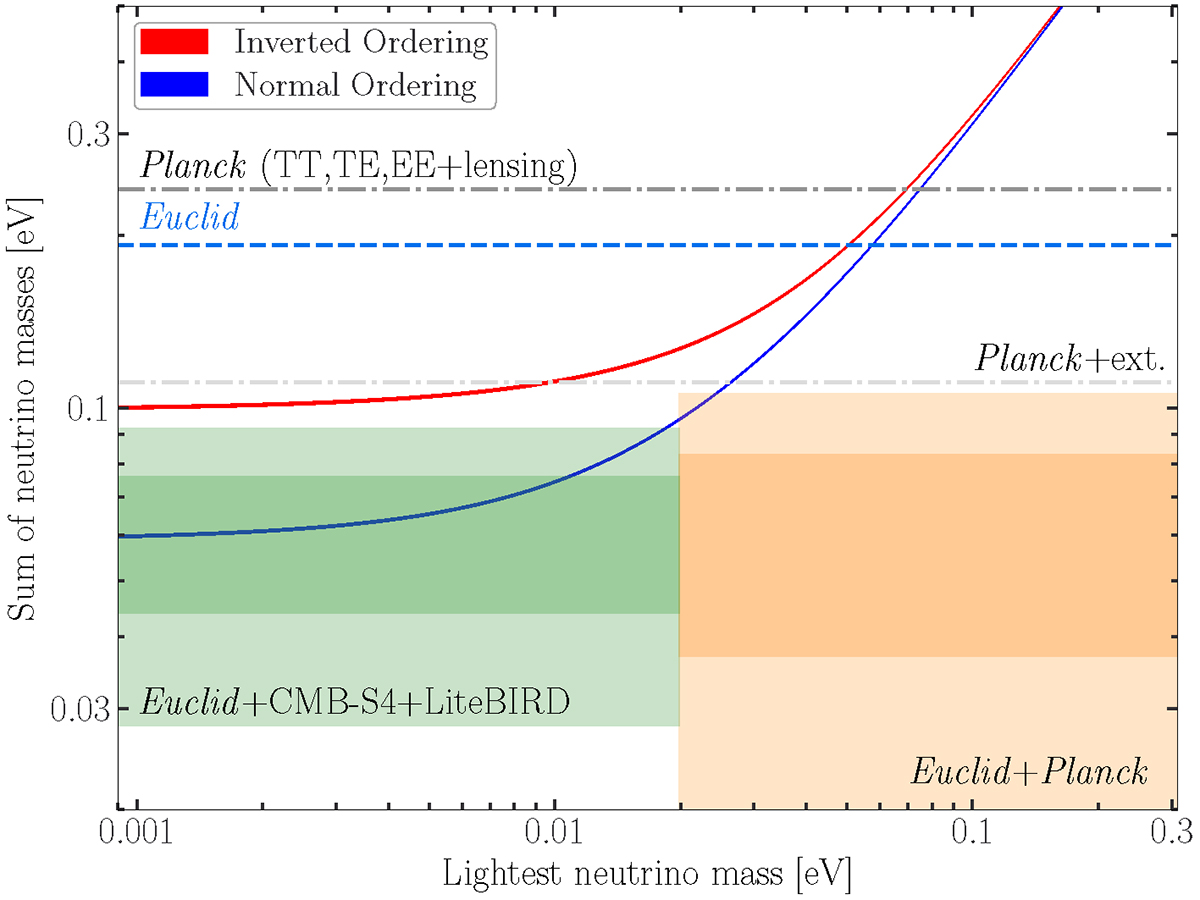Fig. 17.

Download original image
Sum of neutrino masses ∑mν in the inverted ordering (red solid line) scenarios and in the normal ordering (blue solid line), including the uncertainties on the mass squared differences from oscillation experiments, as a function of the lightest neutrino mass. The grey dot-dashed lines show the 95% CL upper bounds from Planck only (dark grey), and in combination with external data (Planck +ext., light grey). For the latter we use the value quoted in Alam et al. (2021) for Planck +Pantheon-SNe+SDSS(BAO+RSD)+DES 3 × 2pt, which includes Planck, Pantheon type Ia supernovae, baryon acoustic oscillations and redshift-space distortions from the Sloan Digital Sky Survey, and weak lensing measurements from the Dark Energy Survey. The region above the blue dashed line is excluded at 95% CL by Euclid only primary probes. The orange shading shows the 68% and 95% CL limits on ∑mν from Euclid +Planck in the baseline ΛCDM+∑mν model, assuming a fiducial value ∑mν = 60 meV. The 68% and 95% CL constraints from Euclid +CMB-S4+LiteBIRD are shown in green. We note that we split the two constraints into two different ranges of the lightest neutrino mass only to avoid an overlap of the two shadings. Assuming that the true value of the neutrino mass sum is indeed the minimum allowed by neutrino oscillation experiments in normal ordering, the combination Euclid +CMB-S4+LiteBIRD will rule out the inverted ordering at 2.5 σ.
Current usage metrics show cumulative count of Article Views (full-text article views including HTML views, PDF and ePub downloads, according to the available data) and Abstracts Views on Vision4Press platform.
Data correspond to usage on the plateform after 2015. The current usage metrics is available 48-96 hours after online publication and is updated daily on week days.
Initial download of the metrics may take a while.


